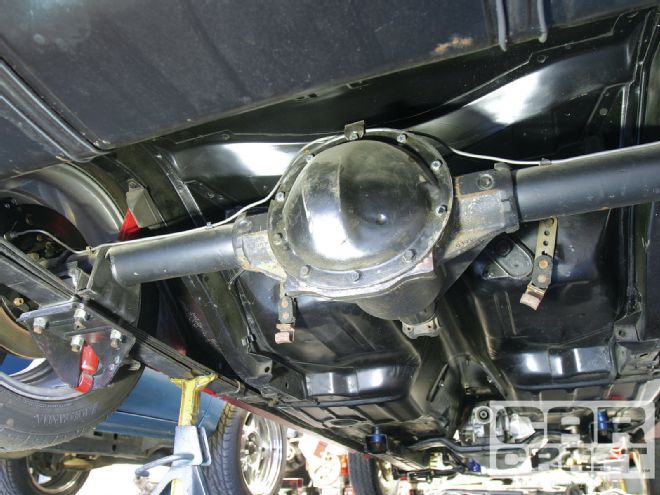
Face it, you'd have a better chance of finding an honest Congressman than you would of discovering a used 12-bolt rear axle assembly in the junkyard. Sadly, the days of stumbling onto 12 bolt rear ends are over. If you really want a 12 bolt rear end, the easiest find is an aftermarket housing from Moser, but be prepared to spend upwards of $2,500 for a complete, road-ready rear end. For those willing to spend the time looking for a nearly-as-strong housing for an early Camaro or Firebird, tune your search radar to '72 to '75 Novas that all came stock with 8.5-inch 10-bolt rear ends. This is not a new idea, and we've covered this strategy several times in the past. What is new is how to set up one of these rear endss with far less effort and make it stronger without spending big bucks.
There are two big hassles with setting gears in a GM rear ends. The first is establishing the proper pinion depth to get a good pattern and then using 300 to perhaps 400 ft-lb of torque to set the pinion bearing preload. You probably know the drill: Most guys use a pneumatic impact gun, but that is hard on the pinion bearings. We've actually broken a 1/2-inch drive breaker bar (using a 3-foot-long cheater bar) in an attempt to set the preload. The problem is the design of the crush sleeve. Ratech has come up with a much cleaner version called the Smart Sleeve, which requires less than half the torque (about 120 to 150 ft-lb) and nearly doubles the range the sleeve can be compressed from the stock amount of about 0.040 to 0.060 inch to 0.095 inch. The Smart Sleeve also has great cycle stability, as it's a more compact design.
This makes swapping gears into the 10 bolt rear ends much easier. We have a couple of other really slick ideas that help here. Ratech makes a great pinion depth installation tool that works really well for aftermarket gears. But what happens when you want to swap in stock gears that don't have a pinion depth noted on the pinion? We've found the best place to start is to reuse the stock pinion shim that's located between the pinion gear and the bearing. Since all hypoid gears are lapped in on the gear machine using the same pinion depth relationship, the shim on a factory ring-and-pinion installation is used to accommodate the difference in pinion depth between housings. So it stands to reason that using the same-thickness pinion shim will deliver a gear-tooth pattern very close to ideal. The great thing about this GM 10-bolt is that you can easily find gears and sometimes limited-slip units from '77 to '94 Chevy half-ton pickups and vans that use the same 8.5-inch 10-bolt rear axle. This makes finding a 3.42:1 gearset much easier and less expensive.